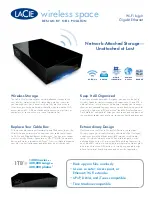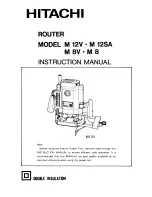
63
11.
<channel>
lcpmaxconfigure
Syntax:
<channel> lcpmaxconfigure [<n>]
Description:
Set the Max-Configure parameter for LCP. This is the maximum number of Configure Requests
that will be sent without reply, before assuming that the peer is unable to respond. Call with no
argument to find the current setting.
The default value is 10. Configuration saving saves this information
12.
<channel>
lcpmaxfailure
Syntax:
<channel> lcpmaxfailure [<n>]
Description:
Set the Max-Failure parameter for LCP. This is the maximum number of consecutive Configure
Naks that will be sent before assuming that parameter negotiation is not converging. Call with no
argument to find the current setting.
The default value is 5. Configuration saving saves this information.
13.
<channel>
lcpmaxterminate
Syntax:
<channel> lcpmaxterminate [<n>]
Description:
Set the Max-Terminate parameter for LCP. This is the maximum number of Terminate Requests
that will be sent without reply, before assuming that the peer is unable to respond. Call with no
argument to find the current setting.
The default value is 2. Configuration saving saves this information.
14.
<channel>
llc
Syntax:
<channel> llc [1|0]
Description:
If 1, use an LLC header on the front of transmitted packets and require one on received ones. This
consists of four bytes, FE-FE-03-CF, and is required for PPP Over AAL5 (RFC 2364 p4) when using
LLC encapsulated PPP. If 0, disable this. Call with no argument to find the current setting.
The default value is 0 (disabled). Configuration saving saves this information.
If not set, and a packet is received with an LLC header, the channel goes into a ‘learned LLC’ mode
and sends packets with the LLC header. Thus, interoperation with LLC-using equipment should
not normally require any configuration. Learning occurs in this direction only. Setting
hdlc
to 0
clears this learned state.
Configuration saving does not save the learned state.
15.
<channel>
pvc
Syntax:
<channel> pvc [[<port>] <vpi>] <vci> [ip|mac] [listen]
<channel> pvc none
Description:
Attach an ATM PVC to the given PPP channel. The port can be specified (only for a multi-port
device), and the VPI (default is 0), and the VCI. The allowable range of port, VPI, VCI depends on
the ATM driver. Normal limits are 0 only for port, 0 only for VPI, 1..1023 for VCI. If a single
argument
none
is supplied, any current connection is torn down. This is equivalent to
svc none
on
the channel. In the PPP state machine, providing a link of this form causes the link to be ‘up’. Note
that
enable
must also be used, to allow the link to become operational. The
ip
or
mac
indicates which
form of data is transported over the connection: one of IP data (controlled by the IPCP protocol), or
MAC data (for BCP). If neither is provided,
ip
is assumed. If the channel is not linked to an
interface, and the channel is for IP data, the channel is linked to interface 1. If the channel is not
linked to an interface, and the channel is for MAC data, the channel is linked to interface 2.
Providing a PVC setting unsets any SVC setting. See the
svc
command. It is possible for a PVC to
become ‘down’ in the PPP state machine even though the PVC is still there, for instance due to an
authentication failure. If in this state, an incoming packet will cause the PPP state machine to go
















































